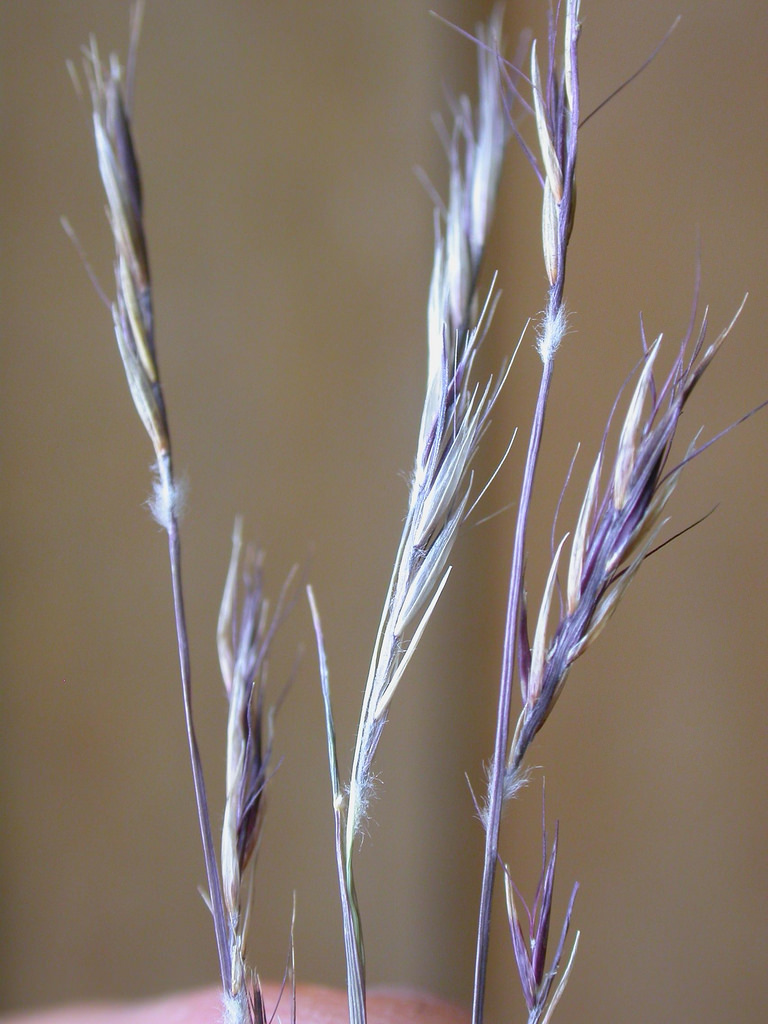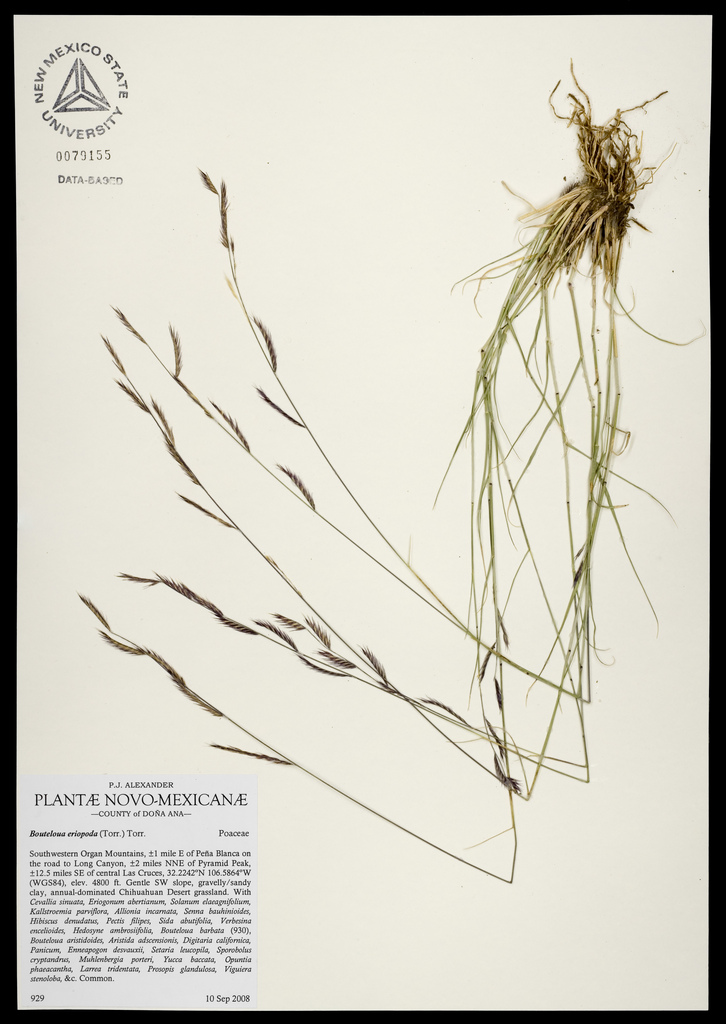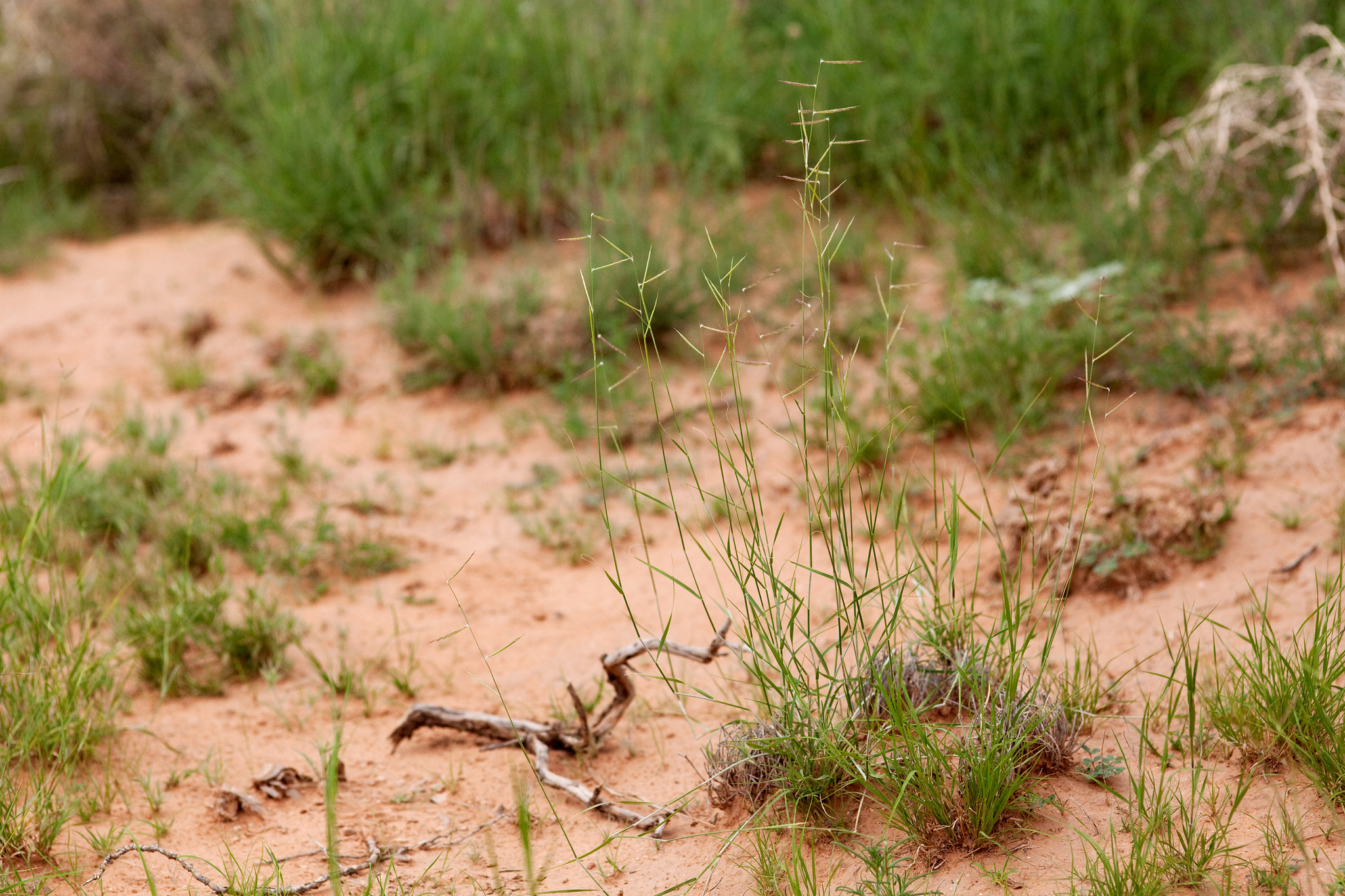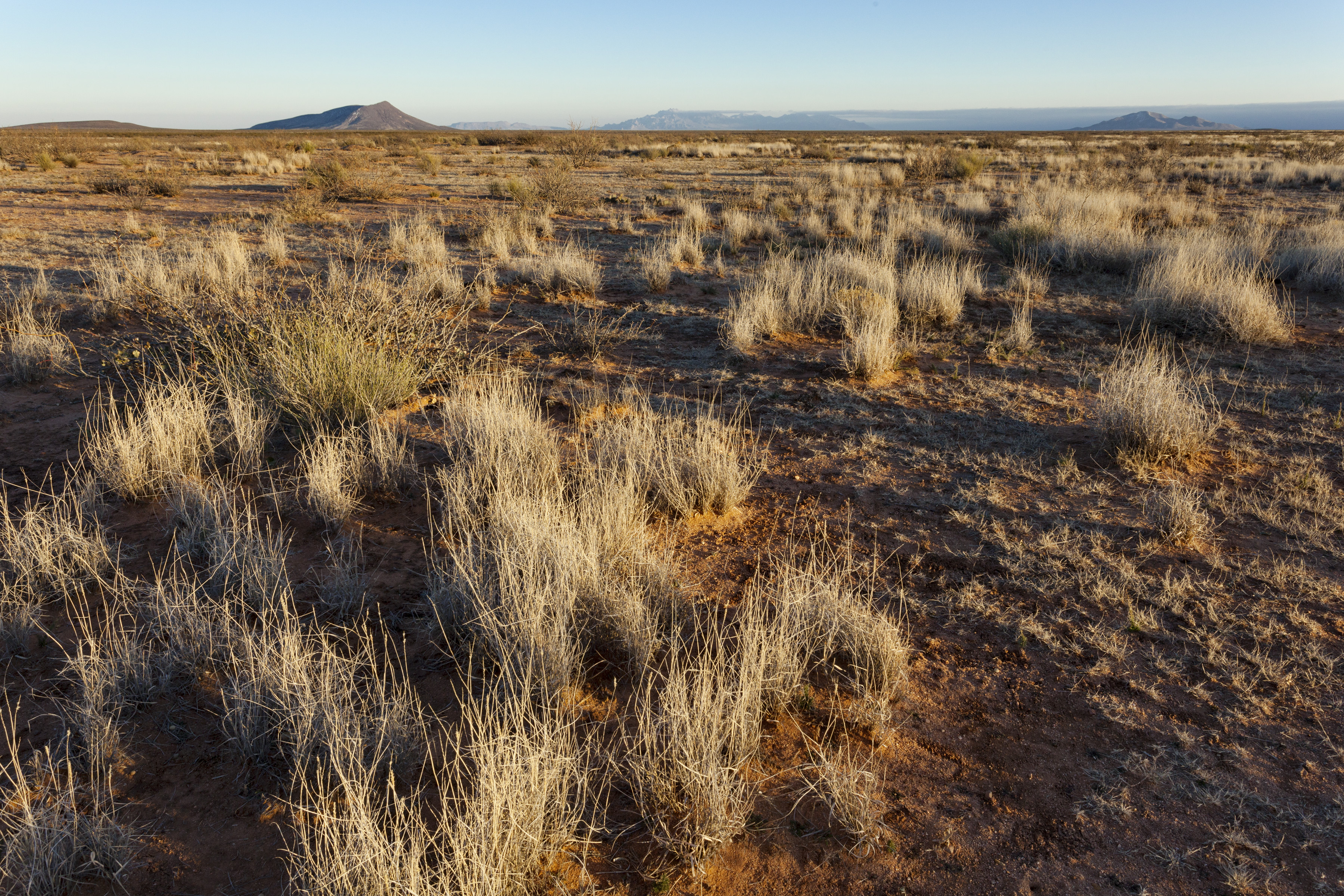Selected Plants of Navajo Rangelands
Grama, black

Black grama is a native, warm-season, perennial grass 10-20 inches tall. It has crooked wooly stems with narrow leaves, less than 1/8 inch wide, inrolled and wavy. Seedheads are similar to blue grama, except narrower. One of the region's most valuable and nutritious grasses.
It grows mostly on dry gravelly or sandy soils and seldom grows on clay loams or adobe (clay) flats. Black grama is characteristically a lower altitude grass (3,500 to 5,500 feet elevation), but occasionally grows at elevations of 7,000 feet.
Overgrazing easily kills this grass. To improve black grama ranges, defer grazing two successive years during the growing season and do not graze more than 50 percent of current growth by weight during dormancy. Once the improvement is achieved, maintain ranges by deferring grazing for one growing season every third year.



©2018 NMSU Board of Regents.
Individual photographers retain all rights to their images.
Partially funded by the
Western Sustainable
Agriculture Research and Education Program
(westernsare.org; 435.797.2257),
project EW15-023.
Programs and projects supported by Western SARE are
equally open to all people.